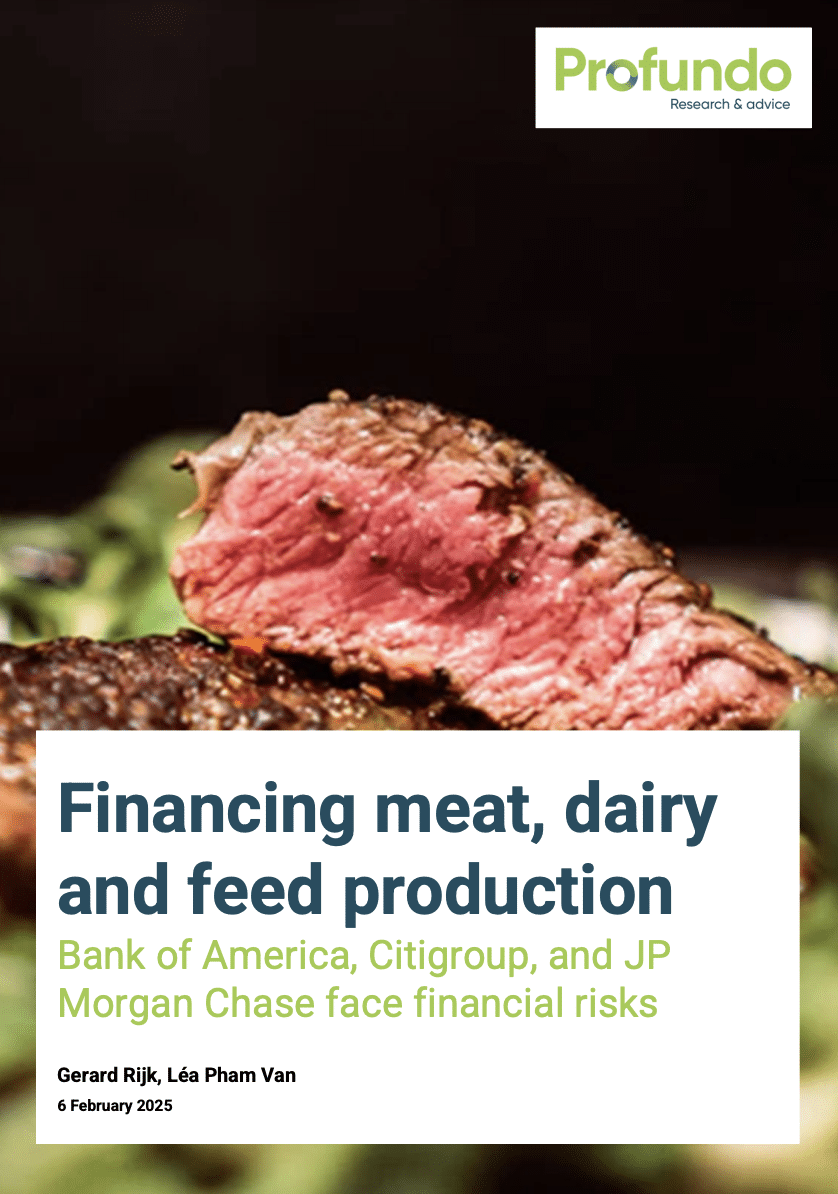Berita
Industrial Livestock Production: Climate-Related Financial Risks

Blog originally posted here
Global food systems account for more than one third of the world’s GHG emissions, with meat, dairy and animal feed production accounting for 60% of this amount. Corporations involved in meat, dairy, and feed production are among the world’s highest emitting. Just five of the world’s largest meat and dairy producers emit more GHGs than Exxon, BP or Shell.
According to this new report carried out by the Netherlands-based research firm Profundo and supported by Friends of the Earth U.S., between now and 2050, 31 of the world’s largest corporations involved in meat, dairy and animal feed production could face up to US$ 5.4T in climate-related losses. Such losses would wipe out the corporations’ combined US$ 725B in equity value and US$ 932B in enterprise value and pose significant risks for major US-based lenders and investors. Bank of America (BofA), Citigroup (Citi) and JP Morgan Chase (JPMC) could face up to US$ 9.3B in lending and investment-based losses.
Read the full report
Read the executive summary
Read the press release
The data is clear: climate risk is financial risk. And U.S. banks are increasingly under pressure from policymakers, investors, and civil society to minimize this risk by reducing the greenhouse gas (GHG) emissions attributable to the loans, underwriting, investments, and other financial services they provide.
According to a June 2024 analysis by Profundo and Friends of the Earth U.S., BofA, Citi and JPMC (the “Big Three”) provided, arranged, or issued US$ 74B in financing and underwriting to 29 of the world’s largest meat, dairy and feed corporations between 2016 and 2023. While this financing constituted a minor fraction of the banks’ overall financing, it had a major impact on the banks’ financed emissions. The Big Three’s lending to 29 corporations represented just 0.25% of the banks’ total loans outstanding but roughly 11% of their reported financed emissions. According to this new analysis by Profundo, climate-related losses to the Big Three’s meat, dairy and feed clients could put 90% of the banks’ current financing at risk.
While continued support for industrial livestock production involves financial risks for the Big Three, the reality is that U.S. banks’ support for the continued expansion of industrial livestock extends well beyond portfolio returns and enterprise value to the broader climate system, the stability of financial markets, and the long-term portfolio returns on which global economic growth ultimately relies.
Beginning now, the Big Three must take swift and meaningful action to reduce — and ultimately eliminate — financed and facilitated emissions from corporations involved in meat, dairy, and/or feed production. Taking action on a tiny portion of their portfolios will have an outsized impact on the banks’ ability to honor their net zero commitments, comply with existing and forthcoming climate and sustainability-related regulations, and align their lending and investment activities with the Paris Agreement, Global Methane Pledge, and international initiatives supporting sustainable and resilient agriculture.
Key Actions for the Big Three
Curtail and ultimately halt financing that enables the expansion of industrial livestock production, including by:
- Not issuing new corporate or project-based financing or revolving credit facilities to corporations involved in meat, dairy or feed production
- Not renewing any existing loans or facilities to such corporations
- Not underwriting bonds, IPOs, or secondary offerings of such corporations
- Halting new investment in such corporations’ publicly traded securities
Until banks halt financing that supports the global expansion of industrial meat, dairy and feed production, they should require that clients involved in such production disclose third-party verified 1.5°C targets and action plans that align with IPCC or an equivalent science-based sectoral pathway. At a minimum, banks should require that these clients:
- Disclose 100% of their disaggregated (CH4, CO2, N2O) GHG emissions across all Scopes (1-3)
- Set and disclose near-term and long-term timebound absolute reduction targets for CH4, CO2, N2O
- Prioritize reduction of CH4 and adopt absolute CH4 emissions reductions of at least 30% from 2020 levels by 2030 (to align with the Global Methane Pledge)
- Achieve emissions reductions by reducing the number of animals in global supply chains and without reliance on carbon offsets, credits or similar mechanisms